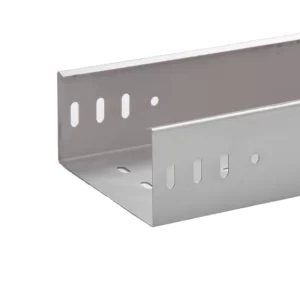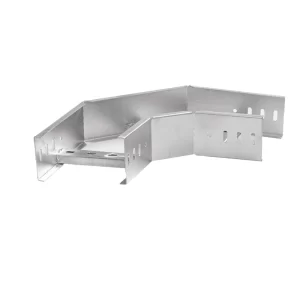The concept of a heavy duty cable tray is of significant importance in the realm of electrical and infrastructure systems.
A heavy duty cable tray is essentially a structural framework designed to support, route, and protect a large volume and weight of electrical cables. It serves as a critical component in various industries and applications where the demands on cable management are substantial.
These cable trays are engineered to handle intense mechanical stress and heavy loads. The materials used in their construction are chosen for their strength and durability. Commonly, high-quality metals like thick-gauge steel, robust aluminum alloys, or corrosion-resistant stainless steel are employed.
One of the defining characteristics of a heavy duty cable tray is its capacity to accommodate a vast number of cables of different types and sizes. This includes thick power cables carrying high currents, as well as multiple data and communication cables. The tray’s design ensures that the cables are neatly organized and separated, minimizing the risk of entanglement and interference.
The design elements of heavy duty cable trays are carefully thought out. They often feature reinforced edges and cross-braces to enhance structural integrity. Perforations or slotted patterns on the tray surface not only reduce the overall weight but also facilitate air circulation, aiding in heat dissipation from the cables.
In industrial environments such as manufacturing plants, heavy duty cable trays are indispensable. They need to withstand the constant vibration from heavy machinery, potential impacts from moving equipment, and exposure to dust, debris, and harsh chemicals. For instance, in an automotive assembly line, the cable tray must remain stable and functional amidst the constant movement and noise, ensuring a continuous power supply to the various processes.
In large commercial buildings, especially those with complex electrical systems like high-rise office towers or shopping malls, heavy duty cable trays are crucial for distributing power and data throughout the structure. They need to handle the weight of cables running over long distances and multiple floors, while also allowing for easy access for maintenance and future expansions.
Let’s take a data center as an example. Here, a heavy duty cable tray system is essential to manage the dense network of power and data cables that power the servers and networking equipment. The tray must provide a secure and organized pathway for these cables to ensure optimal performance and minimize the risk of downtime due to cable-related issues.
In conclusion, a heavy duty cable tray is not just a simple conduit for cables but a sophisticated and resilient system that plays a vital role in maintaining the seamless operation of electrical and communication networks in demanding and critical applications. Understanding its features and functions is crucial for ensuring the efficient and reliable functioning of various industrial and commercial setups.



